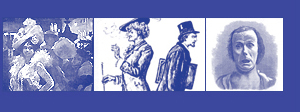Criminality
Title : Crime : Its causes and Remedies (1911)
Keywords: Lombroso. Positivism. Born Criminal. Heredity. Alcoholism. Epilepsy. Statistics. Measurement. Craniometry. Physiognomy. Criminal Anthropology. Prostitution. Suicide.
Introduction
Lombroso’s most important book is L’Uomo delinquente (1876; 2nd edition, 1878; French trans., L’Homme criminel, 1887; German trans., Der Verbrecher, 1887; 4 th edition, 2 vols., 1889; 5 th and final edition, 3 vols., 1896-7; English version, Criminal Man According to the Classification of Cesare Lombroso, briefly summarised by his daughter Gina Lombroso Ferrero, with an introduction by Cesare Lombroso, New York, 1911).
He applied the methods of natural science (observation, measurement, experimentation, statistical analysis) to the study of criminal behaviour. Lombroso rejected the classical theory of crime, associated with Cesare Beccaria and Jeremy Bentham, which explained criminal activity as freely chosen behaviour based on the rational calculation of benefit and loss, pleasure and pain - that is, criminals commit crime because they believe crime pays. Lombroso, by contrast, argued that criminality had an organic, hereditary basis; that it was a product not of rational, if perhaps erroneous, thought processes, but of a biological criminal tendency. He promoted the theory of ‘atavism’, which categorised criminals as developmental throwbacks, savages, reversions to more primitive stages of human evolution.
According to this theory criminals were distinct biologically from non-criminals , almost a different species, and they manifested certain stigmata or physical anomalies (abnormal jaw and skull formations, facial asymmetries, unusual ears, eye defects, abnormal noses, protruding lips, irregular teeth, a receding chin, excessive wrinkles, longer than normal arms, extra nipples or fingers or toes, etc.), which the criminologist could use to diagnose their criminality. Enrico Ferri coined the term ‘born criminal’ to express Lombroso’s theory.
In later editions of L’Uomo delinquente Lombroso broadened his theory in an attempt to account for the various cases of criminality that he came to believe were not caused by atavism. He stressed increasingly the idea that some criminals were the degenerate end-points of diseased, regressive evolutionary lines, and postulated a causal relationship between epilepsy and criminality. In Le Crime: Causes et Remèdes (1899; English trans. Crime: Its Causes and Remedies, 1911), perhaps because of the influence of his collaborator, Enrico Ferri, Lombroso further widened the range of his criminal typology to include occasional or ‘evolutive’ criminals who were not, strictly speaking, throwbacks to primitive man. He subdivided the occasional criminals into various categories, such as pseudo-criminals, those who commit illegal but not immoral acts (e.g. in self-defence), criminaloids, those who have a relatively weak biological tendency to commit crime, whose criminal behaviour is prompted mainly by environmental conditions, or by sheer opportunism; and habitual criminals, who have no organic criminal tendency, and fall into a life of crime because of poor parenting and education, or perhaps by association (e.g. the Mafia).
Lombroso also identified a small number of so-called epileptoids who commit crime because they are affected by epilepsy. Finally, he separated out criminals of passion, those who commit violent crimes when possessed by the ‘irresistible force’ of love or anger or because their honour has been impugned. Included in this group are political criminals, who are unusually, perhaps pathologically, intelligent or sensitive or altruistic or patriotic or pious. In Crime; Its Causes and Remedies, Lombroso suggested that about 33% of criminals were born with a criminal instinct. In 1896 he had put the figure at around 40%.
Back to Documents | Introduction | extract 1 | extract 2

